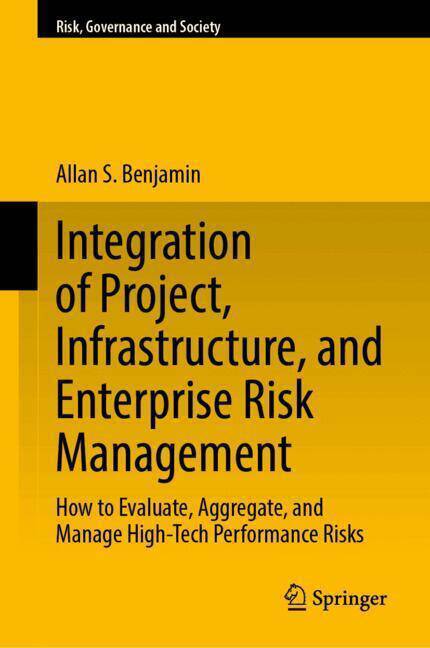
- Afhalen na 1 uur in een winkel met voorraad
- Gratis thuislevering in België vanaf € 30
- Ruim aanbod met 7 miljoen producten
- Afhalen na 1 uur in een winkel met voorraad
- Gratis thuislevering in België vanaf € 30
- Ruim aanbod met 7 miljoen producten
Zoeken
Integration of Project, Infrastructure, and Enterprise Risk Management
How to Evaluate, Aggregate, and Manage High-Tech Performance Risks
Allan S Benjamin
€ 105,45
+ 210 punten
Omschrijving
This book provides a comprehensive introduction to the principles of integrated risk management across three main domains: enterprise, infrastructure/institutional, and program/project risk management. It sets out to define the types of risk that are applicable to each domain, including strategic risk, operations risk, compliance risk, cybersecurity risk, and safety risk, among many others. Using demonstrative examples, the book identifies vulnerabilities in different risk management models, suggests in detail the means for correcting them, and introduces the concept of unknown and underappreciated (U/U) risks that need to be considered in addition to known risks. Then, it goes on to draw on perspectives from a range of disciplines, including systems engineering (SE), expert judgment elicitation, Monte Carlo simulation techniques, and applied statistics, to illustrate how such risks can be evaluated, aggregated, and mitigated. Drawing from experience gained during the NASA space shuttle program, as well as other high-tech programs involving space exploration, commercial nuclear reactors, and strategic weapon systems, Allan Benjamin demonstrates these concepts qualitatively and quantitatively in a set of detailed examples from governmental and industrial settings.
Specificaties
Betrokkenen
- Auteur(s):
- Uitgeverij:
Inhoud
- Aantal bladzijden:
- 250
- Taal:
- Engels
- Reeks:
- Reeksnummer:
- nr. 21
Eigenschappen
- Productcode (EAN):
- 9783031850691
- Verschijningsdatum:
- 11/07/2025
- Uitvoering:
- Hardcover
- Formaat:
- Genaaid
- Afmetingen:
- 155 mm x 235 mm

Alleen bij Standaard Boekhandel
+ 210 punten op je klantenkaart van Standaard Boekhandel
Beoordelingen
We publiceren alleen reviews die voldoen aan de voorwaarden voor reviews. Bekijk onze voorwaarden voor reviews.











